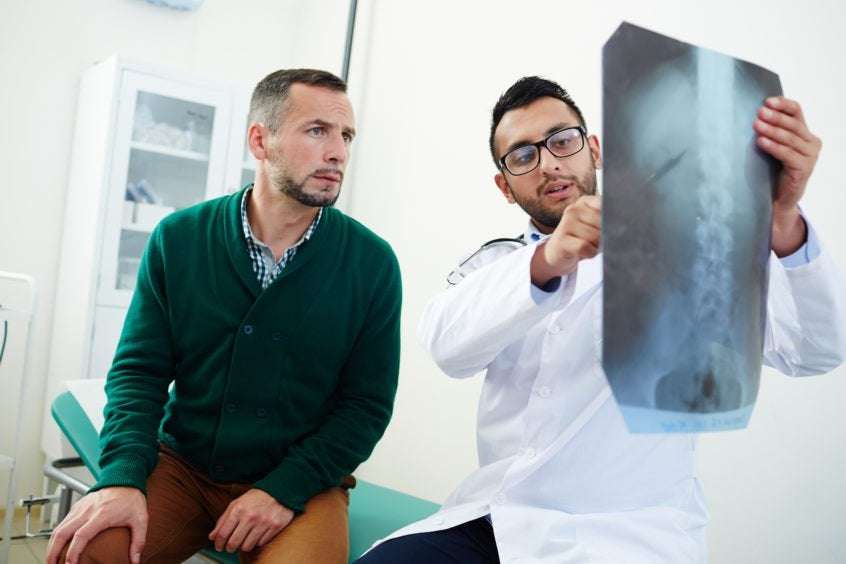Experts from Aberdeen University have discovered a new way to repair injured spinal nerves.
Scientists from the city have managed to regrow spinal nerves in rats after activating a molecule found in nerve cells by using their very own gel.
Dr Wenlong Huang, Dr Derryck Shewan and Dr Alba Guijarro-Belmar from Aberdeen University’s Institute of Medical Sciences found triggering a molecule called Epac2 led to “significant improvement” in the growth of nerves that been severed following injury.
It is the first time that activating this molecule has been found to boost nerve growth like this.
Dr Shewan said the breakthrough was a first in their field.
He said: “Adult spinal nerve cells have very limited ability to regrow which makes recovery from spinal cord injury very difficult.
“We knew that Epac2 molecules are important for nerve growth during embryonic development so it is logical that it may have the same effect on adult nerve cells – encourage them to regenerate.
“This is something that other researchers have tried around the world in many different ways, but we found that our method actually works and is also very efficient.”
Keep up to date with the latest news with The Evening Express newsletter
The study has been published in the Journal of Neuroscience, with city researchers modelling human spinal cord injury in rat nerve cells in a dish.
The treatment was delivered using hydrogel – a new dual-function technique that can carry a treatment to a specific area and slowly release it locally, and it also provides a physical scaffold to support injured nerves across the site.
In another first, not only did Epac2 stimulate growth, the researchers also found that it changed the internal environment at the injury site, making it more amenable to healing.
The hydrogel was then injected into rats with spinal injuries and this proved a success, with the rodents showing improvements in their walking.

thisisnotdan on March 12nd, 2020 at 14:08 UTC »
Can anyone who knows comment on whether this type of nerve repair could apply to a chronic condition like spina bifida? It's essentially a spinal injury of sorts. Not thinking so much about an in-utero cure, but a cure for those who have already been born with the condition.
lewicki on March 12nd, 2020 at 13:56 UTC »
Does one order rat's with broken backs, like from a catalog? Sucks to be the person that is tasked with breaking a bunch of rat's backs.
karmaecrivain94 on March 12nd, 2020 at 11:57 UTC »
Journal article (16/10/19, 5 months ago)
Abstract